- Improve your site’s user experience
- Streamline the checkout process
- Allow social login
- Use progress indicators on your checkout page
- Offer guest checkout options
- Keep the checkout page free of distractions
- Enable easy navigation between store and shopping cart
- Optimize product pages
- Optimize product search
- Offer personalized recommendations
- Be transparent about costs
- Display the cart sum total with every addition
- Allow shoppers to review their order summary
- Create shopping urgencyUrgency messaging makes customers feel that they need to act quickly to take advantage of a special opportunity. It’ll make them want to complete their purchases promptly, helping you reduce cart abandonment.You can create shopping urgency through various means, including using a banner in the cart to announce a limited-time promo.
- Display total savings at checkout
- Implement loyalty rewards
- Make it easy to edit cart items
- Offer free shipping
- Highlight your return and refund policy
- Clarify pertinent information early
- Offer multiple delivery options
- Offer expedited delivery
- Implement dynamic pricing
- Provide several payment options
- Enable integration with digital wallets
- Offer currency switching
- Highlight credit card decline reasons
- Utilize live chat support
- Add social proof to product pages
- Optimize page load speeds
- Use trust symbols
- Display business contact information
- Secure your site with SSL Certificates
- Enable cart saving
- Allow persistent carts across devices
- Enable cart sharing on social media
- Show thumbnails of cart items
- Make Call-to-Actions (CTAs) on checkout pages very clear
- Nudge customers toward checkout
- Explain why you request certain information
- Add gamification to checkout
- Use exit-intent pop-ups
- Implement engaging error pages
- Include an FAQ on the checkout page
- Collect customer feedback to identify pain points
- Conduct user testing
- Ensure your site works on different browsers
- Optimize your site for mobile devices
- Utilize retargeting
- Use cart abandonment follow-up emails
- Email subject lines for abandoned cart emails
Do you know that about 70% of online shoppers abandon their shopping carts? With this stat, it’s easy to see that shopping cart abandonment costs online stores a lot of sales revenue.
Thankfully, you can lower your shopping cart abandonment rate and rake in more eCommerce sales revenue. In this article, we’ll explore 50 simple and effective strategies for reducing shopping cart abandonment rates.
1. Improve your site’s user experience
People do not want a frustrating online shopping experience. As a result, technical issues like website glitches are sure to drive shoppers away.
For this reason, a simple way to lower shopping cart abandonment is to improve your site’s UX.
2. Streamline the checkout process
A complicated checkout process will drive shoppers away as no one enjoys filling out multiple forms just to complete a purchase.
Therefore, to reduce shopping cart abandonment, improve checkout flow by keeping your checkout process as short as possible. Try to keep it between 3 and 5 steps. If possible, offer single-page checkout.
3. Allow social login
Remember that a long checkout process can make online shoppers abandon their carts and leave your site. Conversely, a shorter checkout process can make them complete their transaction. And social login indirectly streamlines the checkout process.
Subscribe to the eCommerce newsletter for
top industry insights
Allowing users to sign in with their social media accounts simplifies the login process by eliminating the need to create and remember another set of account details. This makes it easier for shoppers to proceed with their purchases, leading to faster checkout.
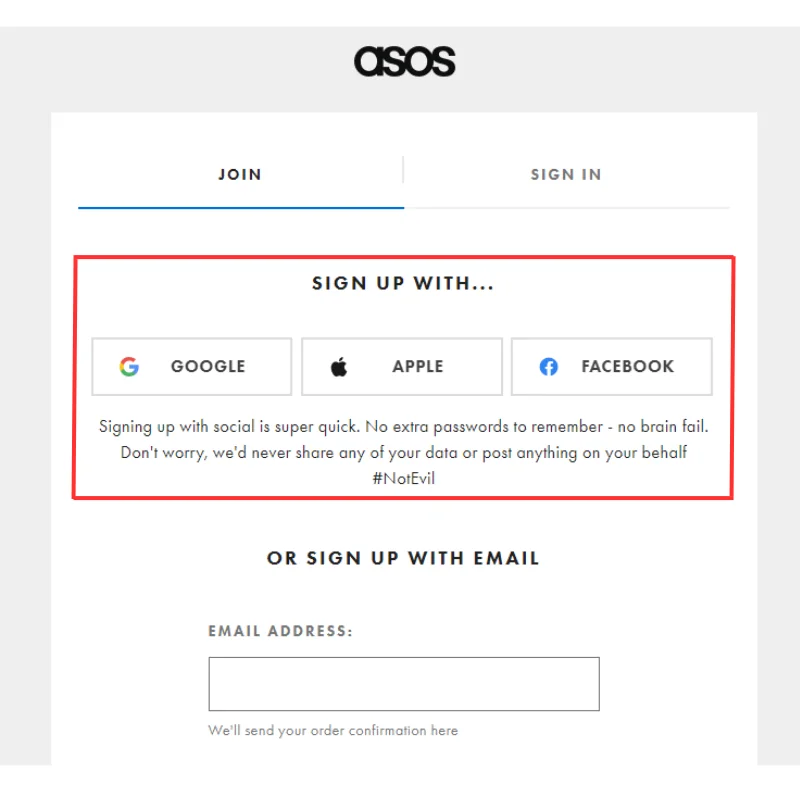
4. Use progress indicators on your checkout page
When you have a multi-step checkout process, progress indicators can provide positive reinforcement that motivates shoppers to continue and finish the process.
Progress indicators show shoppers how far they are in the checkout process. This makes the checkout process engaging to help shoppers focus on completing the purchase.
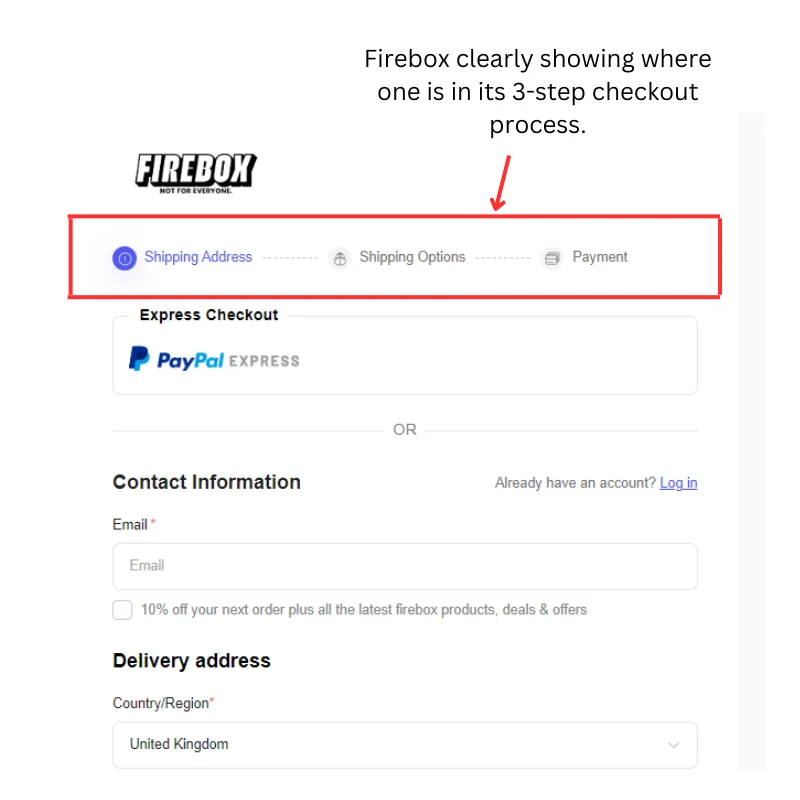
5. Offer guest checkout options
A guest checkout option allows shoppers to complete their purchases without the need for account creation.
Many shoppers see checkout as unnecessarily long when they must go through the process of creating an account and verifying their information. So, one way to reduce online shopping cart abandonment is to allow your shoppers to check out as guests.
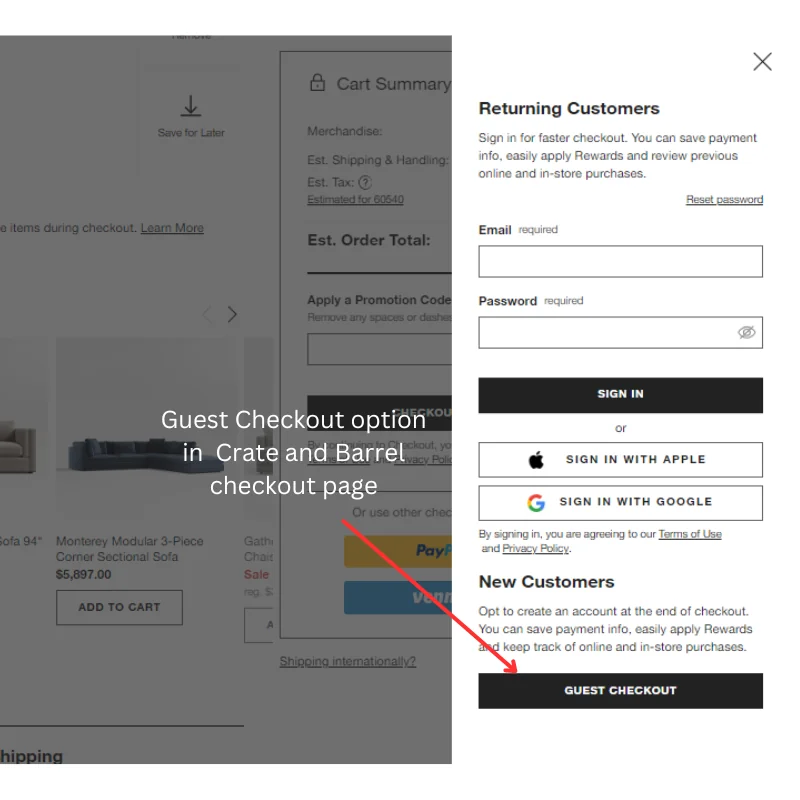
6. Keep the checkout page free of distractions
Know that unnecessary links on the checkout page can lead shoppers away. And when they do, they may not return. So, don’t be the one that leads shoppers out of the cart.
Let your checkout page focus on converting. Keep out everything that may distract them and cause them to veer away.
A common way eCommerce stores lose customers to cart abandonment is by upselling on the checkout page. Many customers who click through to the higher-version product never return to checkout.
Therefore, it may be wiser to keep upselling efforts to your product pages.
Also read: How to increase your eCommerce conversion rate.

7. Enable easy navigation between store and shopping cart
When shoppers have a hard time navigating between your eCommerce store and their cart, they may leave.
Thus, one way to keep customers is to make it easy for them to move between your store and their carts. Make it possible to toggle from the store to the cart to complete checkout or toggle from the cart to the store to look at additional items.
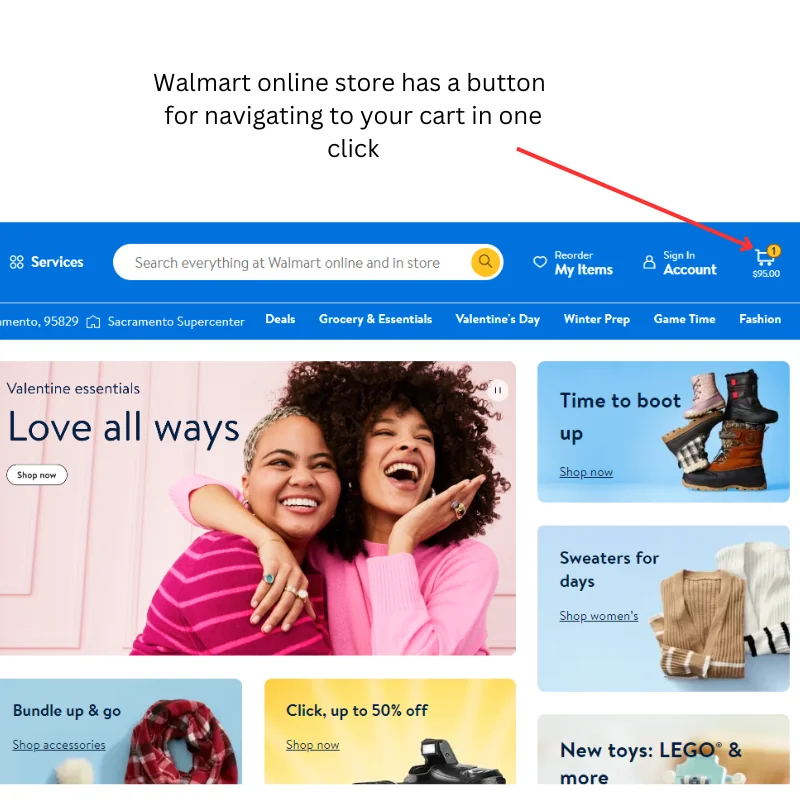
8. Optimize product pages
When customers are unsure about what they are buying, they are less likely to complete the transaction. They may add the item to their carts, but upon reaching the checkout page, the uncertainty may prevail, and they’ll disappear.
So, whatever creates a persuasive shopping experience can make shoppers complete their transactions. Interestingly, optimizing your product pages does that.
- Provide clear product information.
- Ensure that product details are clear, accurate, and comprehensive.
- Use high-quality images (and multiple angles) to showcase the product.
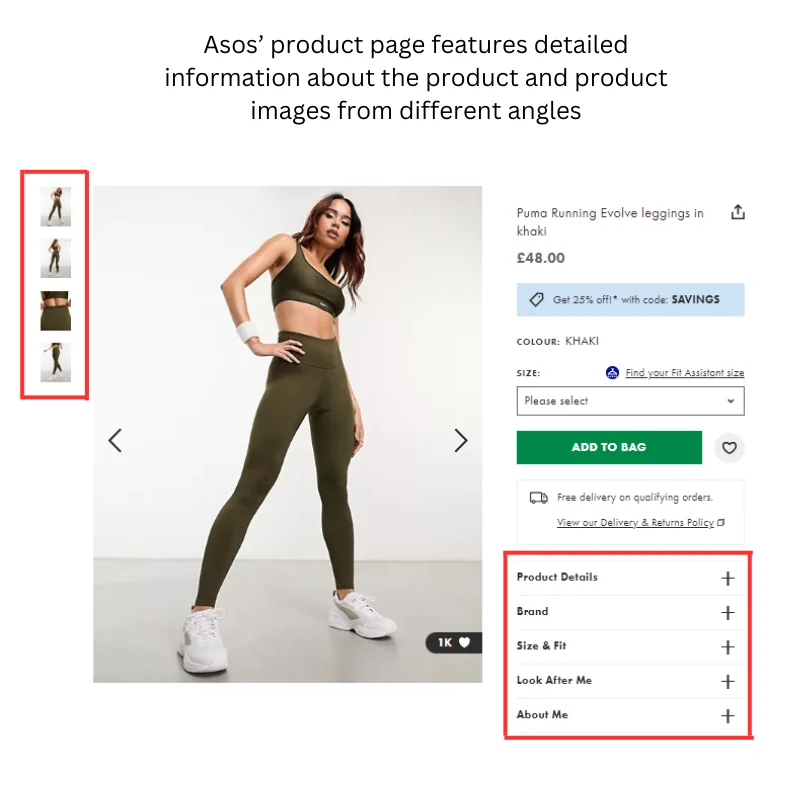
9. Optimize product search
When shoppers have a hard time finding desired items, they may leave your site, abandoning any item already added to their carts.
A simple and effective (but oft-neglected) tactic to reduce cart abandonment is optimizing product search. A well-optimized search function enhances the overall user experience by making shoppers find their desired products more easily. And faster product discovery can prevent cart abandonment due to frustration or impatience.
To optimize product search, ensure that your search algorithm provides relevant and accurate results.
Also, incorporate faceted search filters so users can narrow down their search results based on various attributes.
10. Offer personalized recommendations
Many times, people add items to their shopping carts only to lose interest in the items during checkout. This prevents them from completing the transaction, resulting in cart abandonment.
Thus, one way to reduce cart abandonment is to ensure that whatever shoppers add to their carts are items they are really interested in. Offering personalized recommendations is one way to make sure of this.
Popular content
- 14 strategies to improve your eCommerce business’s financial health
- 50+ ChatGPT prompts to elevate your eCommerce business
- A guide to pricing your product on Amazon
- 5 marketing metrics all eCommerce businesses should track
- All about Amazon PPC
Use a service like Google Analytics to track people’s behavior on your site to know their preferences and then suggest items that align with their interests.
This way, customers are more likely to add products they want to their carts. And they’re more likely to complete their transactions, reducing cart abandonment.
11. Be transparent about costs
Know that the most common reason shoppers give for abandoning their cart is finding extra costs. No one likes being ambushed with a higher checkout price than they expected.
To reduce cart abandonment, be transparent about all costs. If there are other fees, let customers know of these. This way, shoppers won’t be taken aback and want to flee when they see these fees during checkout.
12. Display the cart sum total with every addition
Surprises at any point during checkout can drive shoppers away. Suddenly seeing a huge cart sum total at checkout can be surprising and make shoppers leave your store.
So, to reduce cart abandonment, display the cart sum total with every addition. Whenever a shopper adds an item to their cart, update the cart with the items added as well as the sum total.
13. Allow shoppers to review their order summary
Another way to reduce surprises during checkout is to display an order summary before checkout to allow shoppers to review their orders.
The order summary allows them to review the items they have added to their cart, the quantities of each item, the price of each item, and the cart sum total.
The transparency that an order summary provides means that customers will be fully aware of what they are about to purchase, making them less likely to turn away later on.
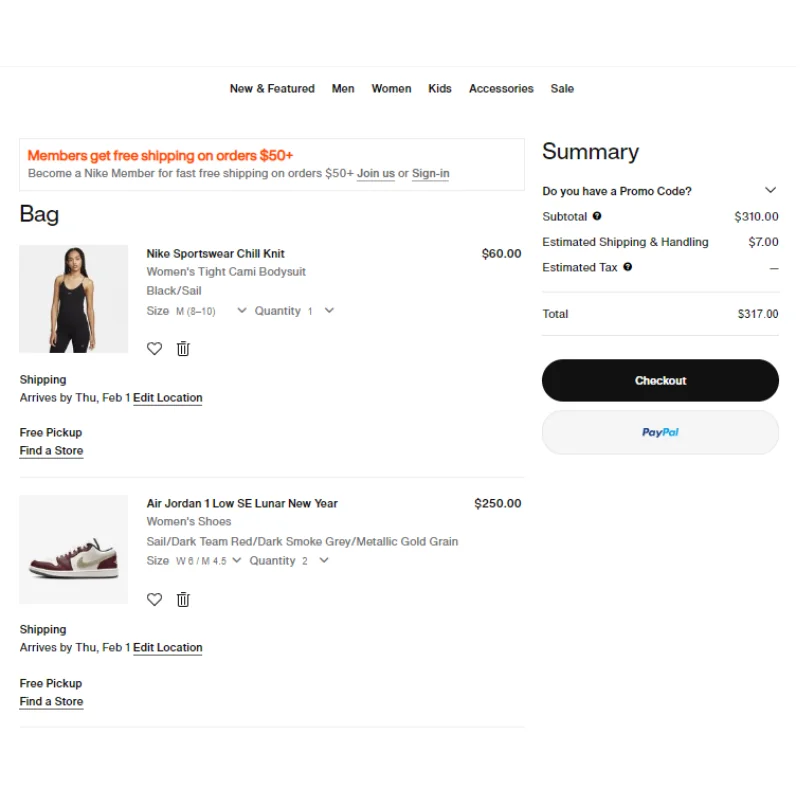
14. Create shopping urgencyUrgency messaging makes customers feel that they need to act quickly to take advantage of a special opportunity. It’ll make them want to complete their purchases promptly, helping you reduce cart abandonment.You can create shopping urgency through various means, including using a banner in the cart to announce a limited-time promo.
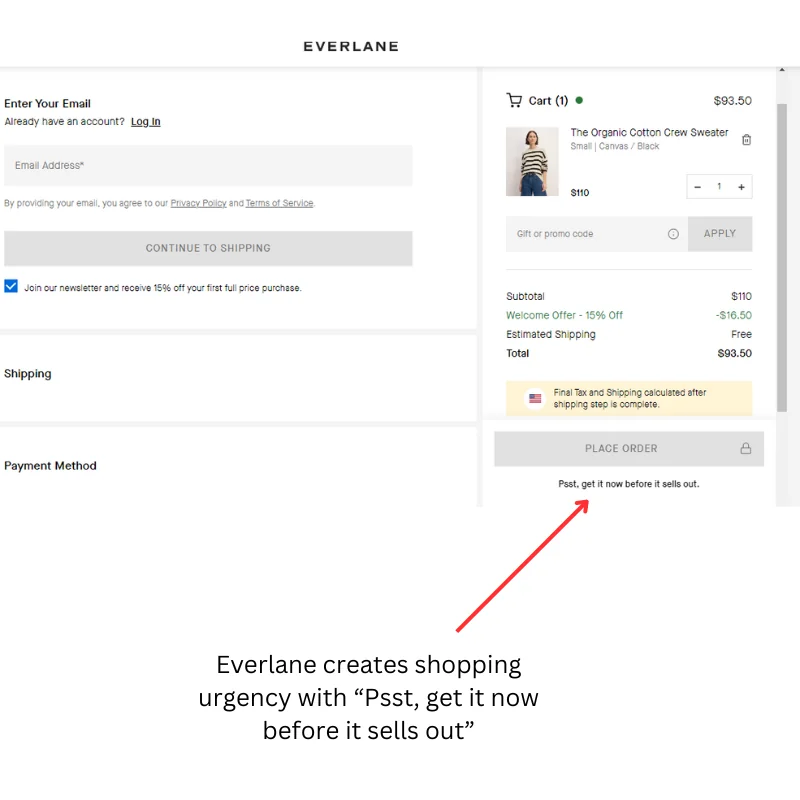
15. Display total savings at checkout
In addition to creating urgency, showing the savings a customer will get by completing the transaction can make them proceed.
Know that doubts during checkout can make shoppers flee. So, reinforcing that they’re getting a good deal can push them over the line. If there’s a discount on items in the cart, show the customer the total savings.
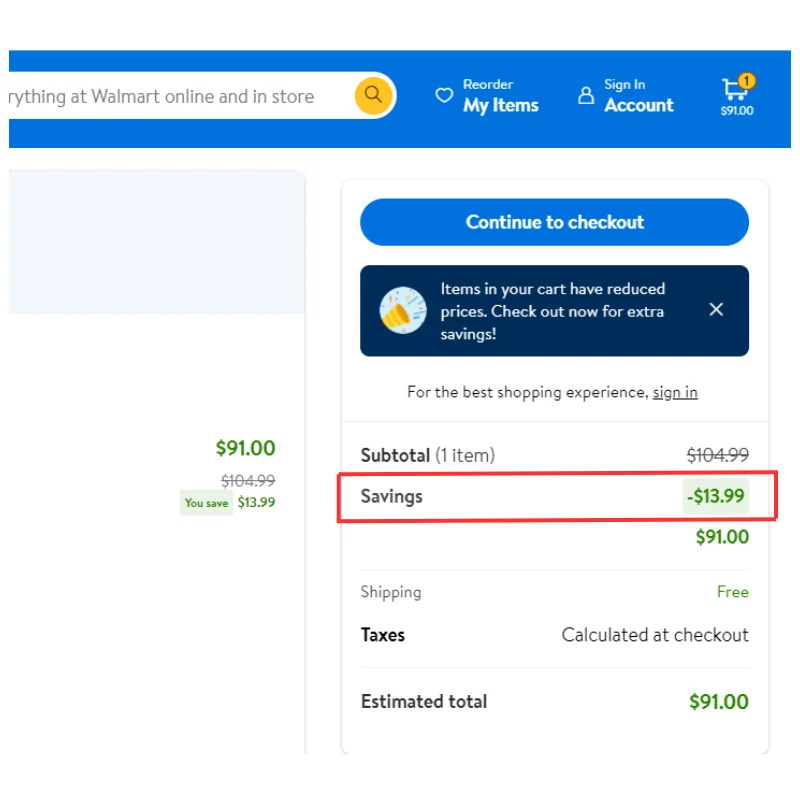
16. Implement loyalty rewards
Loyalty rewards provide customers with incentives to complete their purchases and return to your store.
When customers know that completing their current purchase will earn them points for discounts on future purchases, they are more likely to complete the transaction.
Implementing loyalty rewards is an effective way to lower cart abandonment. Importantly, remind customers of your generous loyalty rewards on your checkout pages to motivate them.
17. Make it easy to edit cart items
Many times, shoppers add items to their carts and then realize they cannot purchase them all. Then, they’ll need to make adjustments before proceeding to checkout.
A challenging process will drive them away. Thus, to reduce cart abandonment, make it easy for shoppers to edit carts (particularly in adjusting quantities and removing items).
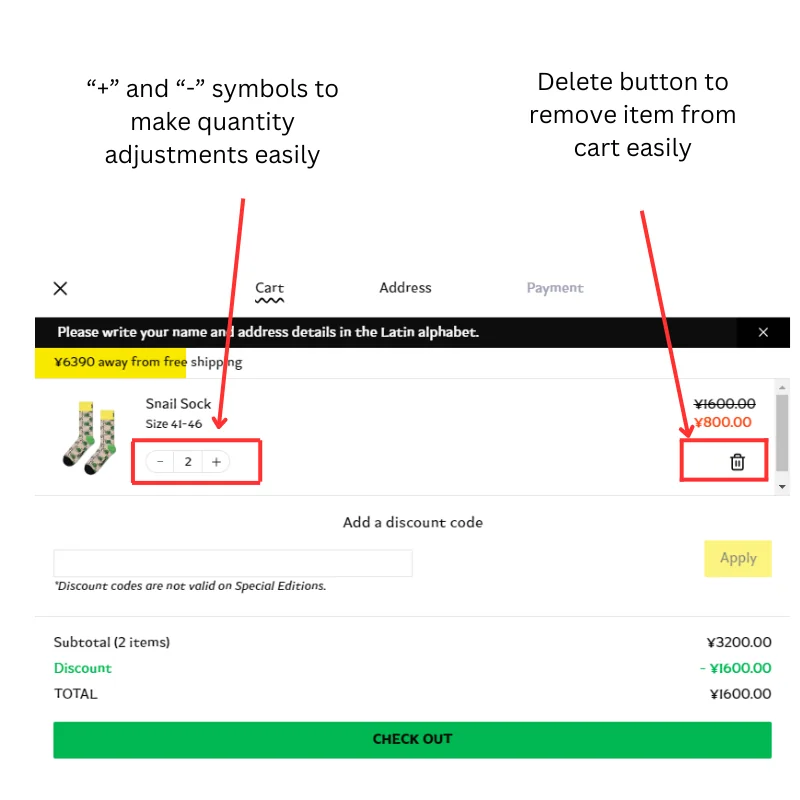
18. Offer free shipping
High shipping costs are a culprit in cart abandonment cases. Many times, shoppers are happy with the price of an item. But when its shipping cost is added in checkout, it becomes too expensive to acquire. And they flee.
Therefore, offering free shipping can help prevent many people from fleeing because of unexpected shipping costs.
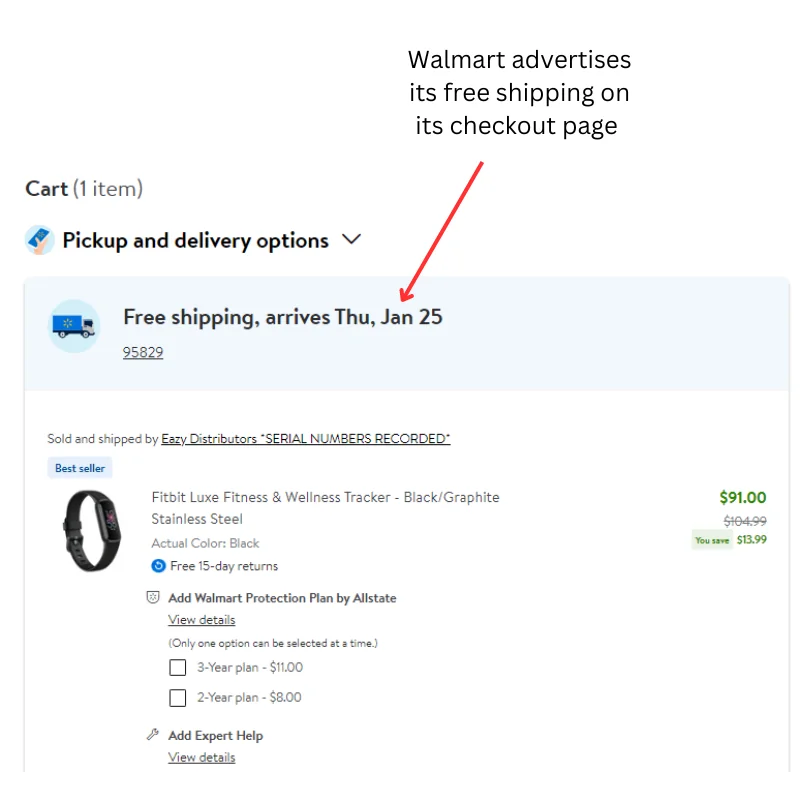
Also read: Why fast, free shipping is important for eCommerce businesses.
19. Highlight your return and refund policy
Many times, shoppers ask the “What if I don’t like it?” question even during checkout. Sadly, that thought can make them turn away.
For this reason, reassuring them with your return policy can motivate them to follow through on their purchase. Using a simple statement, remind shoppers that you have a generous return policy.
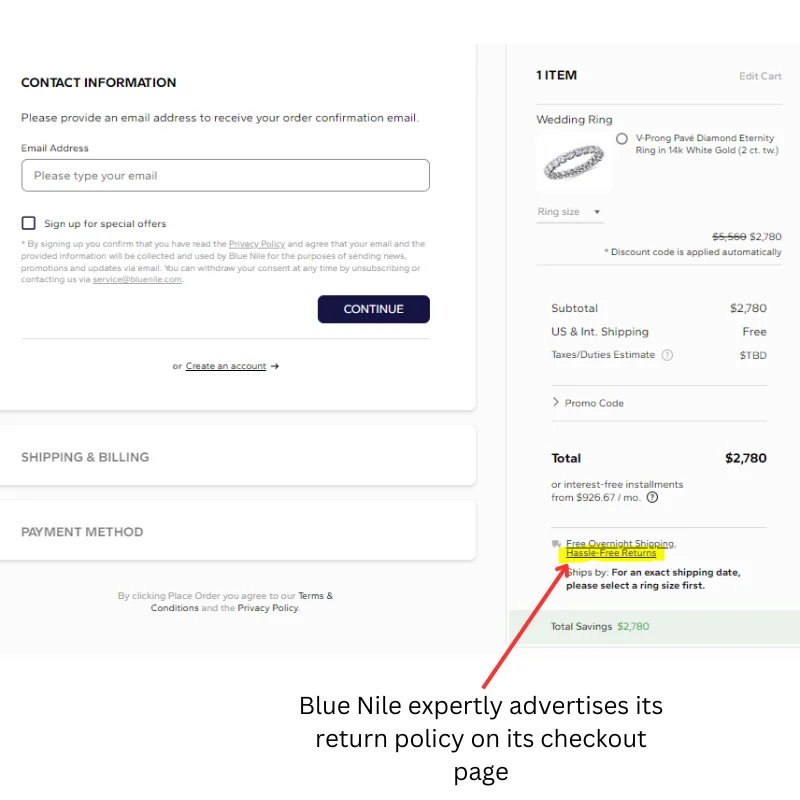
20. Clarify pertinent information early
When you cannot offer free shipping or a generous return policy, inform shoppers early in their shopping journey. If they get to checkout before seeing this information, they’re more likely to turn away.
For example, when you have shipping fees, add a widget to the eCommerce site to help customers calculate shipping costs based on location.
21. Offer multiple delivery options
When customers get to checkout and do not find a delivery option that aligns with their needs, they may leave.
So, a simple way to reduce shopping cart abandonment is to offer multiple delivery options, catering to different speeds and budget needs.
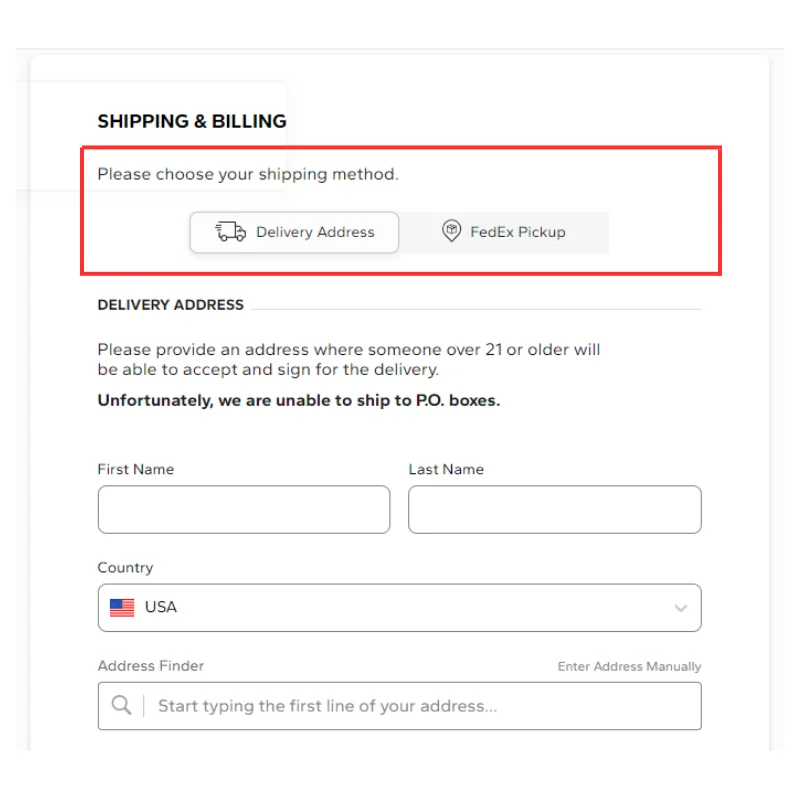
22. Offer expedited delivery
Shopping cart abandonment statistics show that one of the main reasons customers abandon their carts is discovering that delivery is too slow. Know that no one wants to wait forever to receive their online purchase.
Thus, to make customers complete their transactions, it is not enough to offer multiple delivery options. It’s important to ensure that fast and expedited shipping is among them.
23. Implement dynamic pricing
Price is one of the biggest factors affecting purchases. If shoppers feel that your prices are too high, they’re less likely to complete the purchase.
Worse still, shoppers can change their minds because of price even at checkout, causing them to abandon their cart.
So, an effective way to lower shopping cart abandonment is to remind shoppers they’re getting a good deal. And a simple way to do this is by implementing dynamic pricing.
Dynamic pricing means adjusting the prices of products based on factors like demand, inventory level, customer demographics, and external market conditions (like competitor pricing).
A popular way eCommerce stores implement dynamic pricing is by offering price matching, where they agree to match a lower price offered by a competitor. This incentivizes shoppers to complete their transactions, lowering cart abandonment.
24. Provide several payment options
In one survey, 59% of participants said one of the main reasons customers abandoned their carts was not finding a preferred payment option.
So, a simple way to reduce cart abandonment is to offer multiple payment options. Research the payment methods your target customers prefer and offer them.
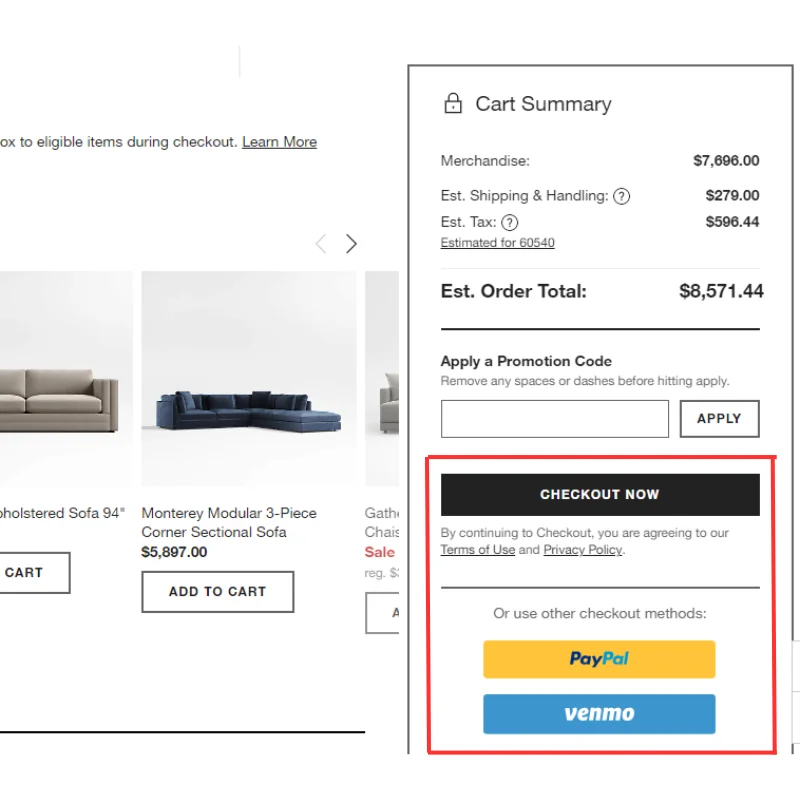
25. Enable integration with digital wallets
In addition to the traditional options, consider offering alternative payment methods like Apple Pay, Google Pay, and other digital wallets.
These options streamline the payment process. They enable fast payments, with many offering one-click checkouts. They enhance security by allowing people to shop without surrendering their credit card information.
For these reasons, even if you offer traditional payment methods, many customers will disappear if you don’t support digital wallets. So, supporting digital wallets can help you combat cart abandonment.
26. Offer currency switching
Customers may not understand the actual costs of items if prices are in a foreign currency. This can cause surprises during checkout, making them leave.
Thus, if you cater to an international audience, offer currency switching to allow users to see prices in their preferred currency.
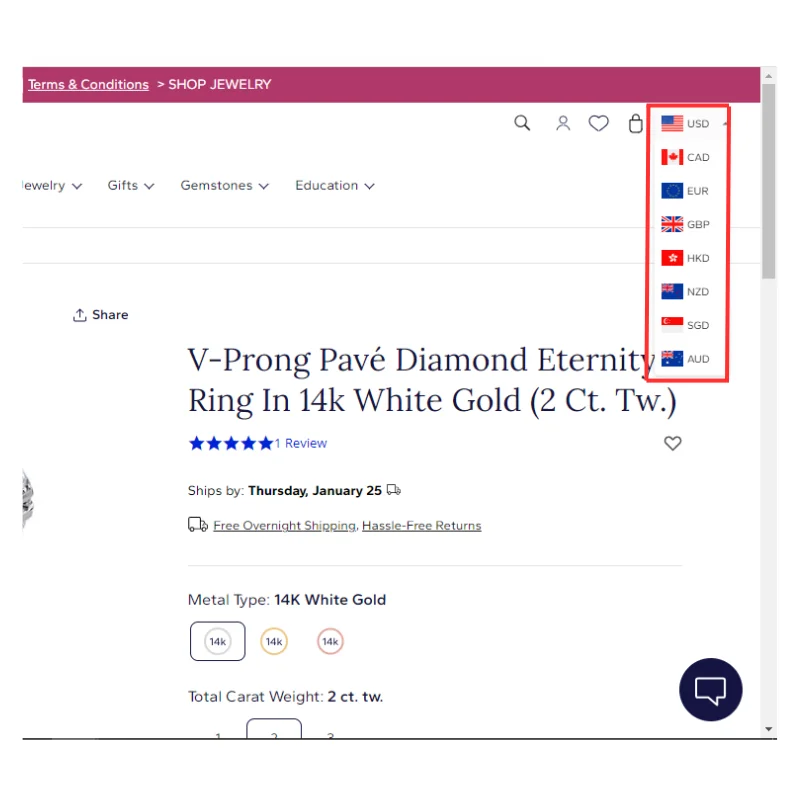
27. Highlight credit card decline reasons
Credit card decline can be frustrating. If customers don’t know the reason for declining their card, the frustration grows, making them leave.
The most common reason for a shopper’s card being declined is insufficient credit.
If you highlight the reason and provide other options, shoppers may be less frustrated and continue with the alternative payment options.
28. Utilize live chat support
Shoppers may have a problem during checkout. And in the absence of support, they may leave.
Therefore, one way to decrease shopping cart abandonment is to add live chat to checkout pages. This allows you to answer customers’ questions and assuage any concerns that may make them leave.
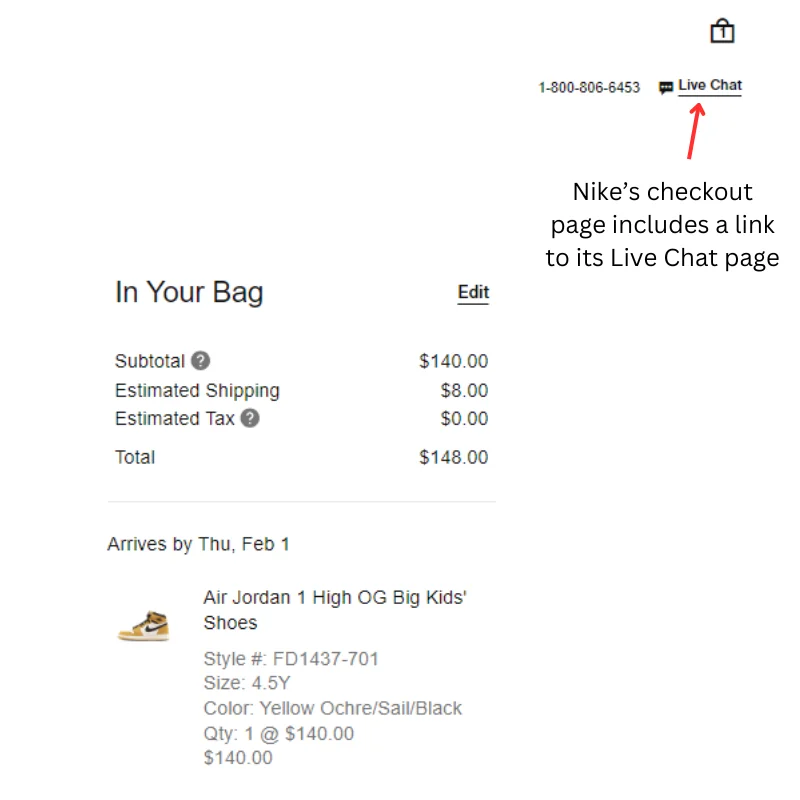
29. Add social proof to product pages
Shoppers trust user-generated content. If they see that other people are buying your products and rating it positively, they’re likelier to proceed and complete the transaction.
Therefore, to avoid losing shoppers, add user-generated content like testimonials, reviews, and star ratings everywhere on your online store, including your checkout page.
Also read: The power of UGC: how to understand and leverage it.
30. Optimize page load speeds
Potential customers will leave your site even at checkout if your site is slow. So, to reduce cart abandonment, boost your site speed.
31. Use trust symbols
People shopping online want to be sure that the site is secure before they share their payment information. Security concerns during checkout can make them abandon their carts.
Alleviate those fears by making trust badges from reputable organizations clearly visible on your eCommerce checkout pages.
32. Display business contact information
Another way to enhance the trustworthiness of your eCommerce site is by adding contact information.
Adding information like a phone number or an email address to your site instills trust in shoppers, as it shows them that there’s a real and accessible person behind the online store.
With such information on your checkout pages, shoppers will feel more comfortable completing their purchases.
Add your business contact information (address, phone number, and email) to your checkout pages. Don’t resign the information to only the site footer.
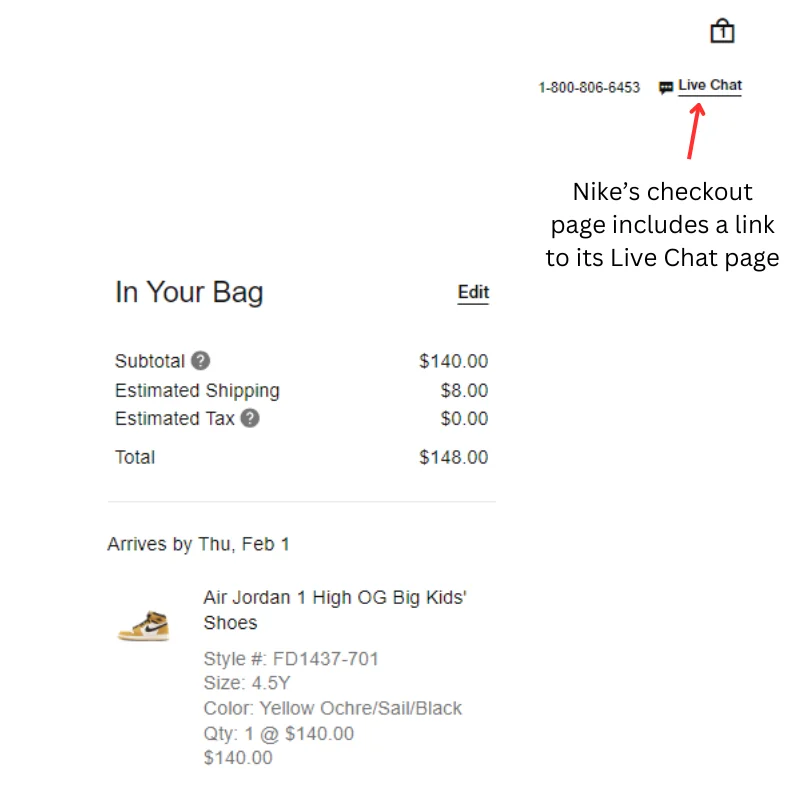
33. Secure your site with SSL Certificates
People will leave your site and abandon any item added to carts if they find that the site lacks security measures.
Trust badges help in this regard. But SSL is the standard in website security, and many shoppers expect eCommerce sites to use them. Thus, getting SSL certificates can help you avoid cart abandonment.
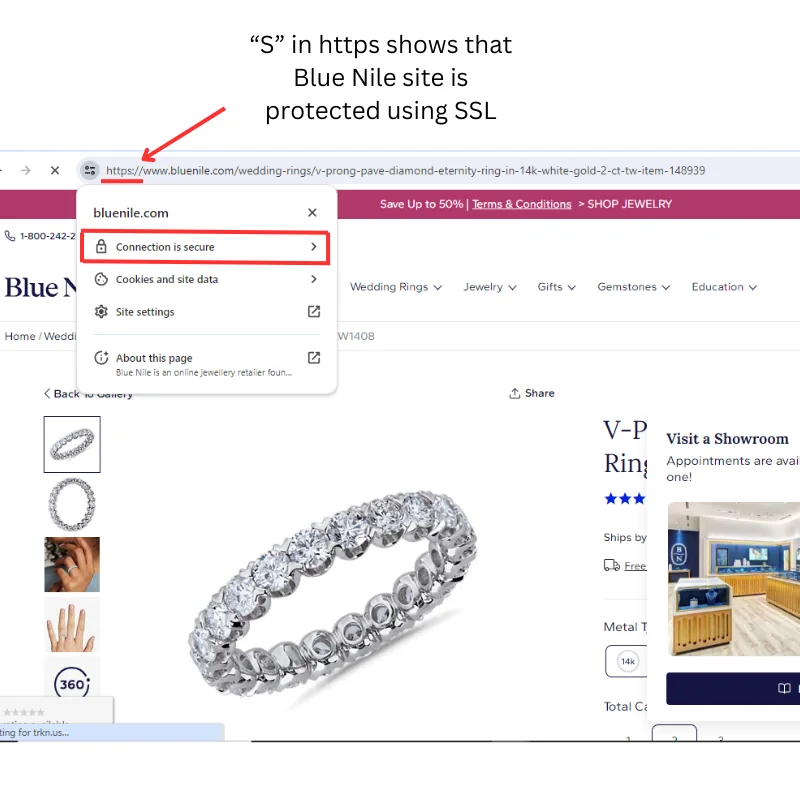
34. Enable cart saving
Customers may not be ready to make a purchase when they add items to a cart. But they may want to come back at a later time to make the purchase.
Having a cart-saving functionality allows them to save their selection for future visits. And this helps you avoid losing them.

35. Allow persistent carts across devices
Shoppers may start browsing your products on one device and then hop to another device. Cart abandonment results when they cannot access the items already added to their carts upon switching devices. This is where “persistent carts across devices” are advantageous.
Persistent carts enable customers to start shopping on one device and continue on another without losing items already added to their cart.
This shopping continuity encourages users to complete their purchases, reducing the likelihood of cart abandonment.
36. Enable cart sharing on social media
When shoppers have doubts about the products they are purchasing, cart abandonment is likely. So, something that reinforces their decision can make them go through with the checkout. This is where cart-sharing on social media comes in!
When customers share their carts on social media, positive feedback from friends can remove any doubt, reinforcing their decision and increasing the likelihood of completing the purchase.
37. Show thumbnails of cart items
Customers may be uncertain about what they’ve already added when they add multiple items to their cart. Without a way to quickly review their selection, they may be surprised during checkout and flee.
Having thumbnails of cart items helps you avoid this. It shows shoppers a snapshot of items. This visual confirmation can reduce the likelihood of surprises during checkout.
38. Make Call-to-Actions (CTAs) on checkout pages very clear
If customers are unsure of what to do next during checkout, they may leave.
To encourage more completed purchases, make the next steps clear to them once they add items to carts. Use simple CTAs (like “Buy Now”), and make these very prominent.
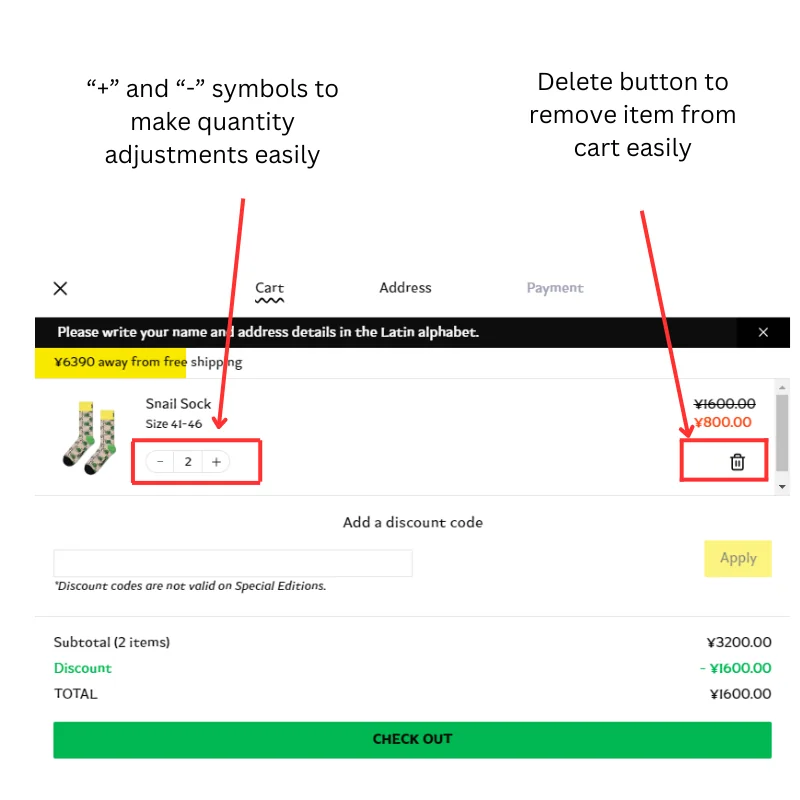
39. Nudge customers toward checkout
Use visual cues to encourage customers to take the action you want them to take.
For example, when a customer adds an item to their cart, a standard practice is to give them two options – “Continue Shopping” and “Go to Cart.” You can nudge them to checkout by color-blocking the “Go to Cart” button.
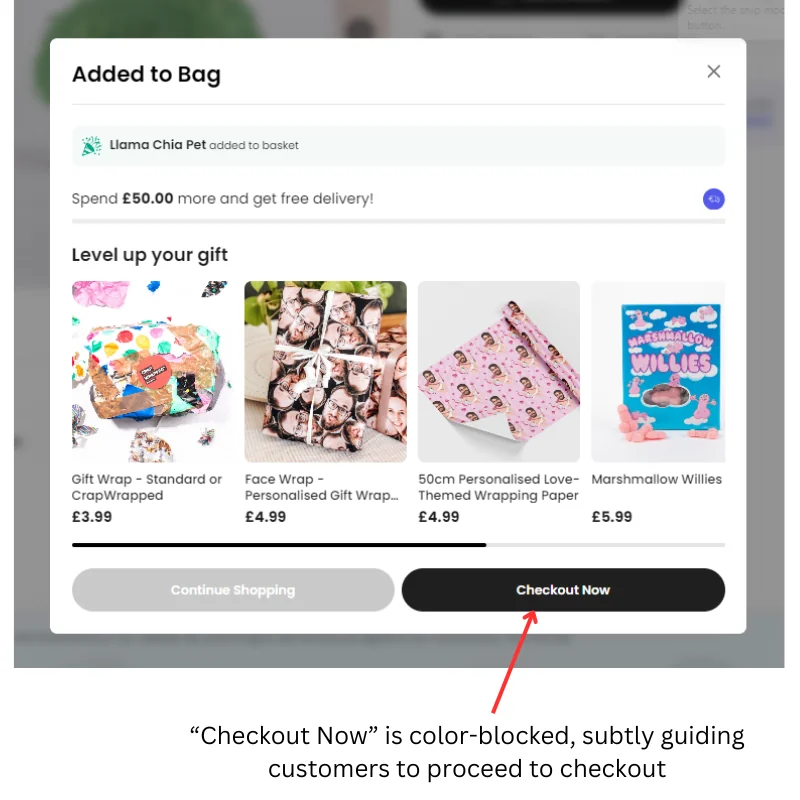
40. Explain why you request certain information
If you request specific information on the checkout page that customers are unwilling to share, they may leave. But explaining why you need the information and providing assurances that you’ll use it discreetly may make them continue.
41. Add gamification to checkout
Yes, the checkout pages should concentrate on converting. But that doesn’t mean they should be lacking in excitement and boring.
When the checkout process is engaging and enjoyable, shoppers are motivated to follow through to the end, reducing cart abandonment.
Adding gamification to checkout can make the checkout experience engaging and even rewarding for shoppers.
A popular way to add gamification to checkout is to use a progress bar to show shoppers where they are in the checkout process and allow them to unlock small rewards (or discounts) as they proceed.
You may also use a spin-to-win wheel, allowing users to spin and receive a random discount or a special offer.
42. Use exit-intent pop-ups
Use exit-intent technology to track customers on your site. If they are about to leave the page without completing their transaction, the tech will pop up a message to convince them to stay.
Using exit-intent pop-ups featuring discounts can motivate customers to complete their purchases.
43. Implement engaging error pages
Sometimes, something can go wrong on your site, and shoppers will get an error message. This can drive them away.
Implementing engaging error messages can help you make some good from the bad situation. Design an engaging page that’ll be shown with the error message, and add links that lead back to the store.

44. Include an FAQ on the checkout page
An FAQ (Frequently Asked Questions) section supplies valuable information that provides clarity on policies and addresses concerns that customers may have.
Addressing the concerns that shoppers may have during checkout (via an FAQ on the page) makes them more likely to complete their transaction, thereby reducing cart abandonment.
45. Collect customer feedback to identify pain points
When shoppers abandon their online shopping carts, they have one or more reasons for doing that. Knowing what these reasons are and addressing them can help you lower your cart abandonment statistics.
So, collecting feedback from users who abandoned their carts is a simple and effective tactic to reduce cart abandonment.
The feedback can reveal obstacles that customers encounter during the checkout process. You can then address these to ensure that users have a better experience on your site.

46. Conduct user testing
Another way to understand customers’ pain points is to conduct usability testing. That is, visit your site as a customer would and make a purchase to experience the checkout process yourself.
This can help you uncover issues in your checkout process. For example, is the checkout process complicated? Did the page load fast? Is relevant information (about product details, shipping cost, return policies, etc.) easily accessible?
User testing can help you answer these questions and more. And that provides valuable insight to address potential friction points that cause shoppers to abandon their carts.
47. Ensure your site works on different browsers
If your online store does not work well on some browsers, it’ll frustrate shoppers and make them leave. To avoid cart abandonment caused by browser compatibility issues, ensure your eCommerce website works well on all browsers.
48. Optimize your site for mobile devices
About 65% of online purchases are made by mobile shoppers. However, if mobile shoppers have a frustrating experience on your site, they’ll leave. A simple way to reduce cart abandonment is to ensure seamless checkouts on mobile devices.

49. Utilize retargeting
Another tactic to get back visitors who leave your site is retargeting and remarketing.
Retargeting uses cookies to track visitors on your site, taking note of those who leave without completing their transactions. As they browse the internet, the retargeting platform will show them customized ads from your store.

50. Use cart abandonment follow-up emails
When shoppers leave your site, you do not have to lose them forever. Get them back with cart abandonment follow-up emails.
Simply remind them what they added to their cart with links to take them back to the store. Adding incentives (like discounts or special coupons) could nudge them in the right direction.
Also read: Expert tips: Email strategies that guarantee sales success.
Email subject lines for abandoned cart emails
The email subject line is what determines whether the cart abandoners who receive your cart abandonment email will open and read the message.
And if they don’t open it, you’re not likely to win them back. So, it’s important to pay attention to the email subject line when sending abandoned cart emails. Some tips for writing strong subject lines for abandoned cart emails include:
- Use the recipient’s name in the subject line to make it feel more personalized.
- Create a sense of urgency.
- Emphasize any discounts or promotions associated with completing the purchase.
- Pose a question that piques the recipient’s curiosity and prompts them to open the email.
- Add warmth to the message using emojis.
That said, some of the best email subject lines for abandoned cart emails include:
- Don’t let your items slip away – Complete your purchase now!
- Your items are waiting. Let’s finish this!
- Hi [Recipient’s Name], Don’t say goodbye to your favorites just yet.
- Forgot something? Your cart misses you.
- We saved your cart – just for you.
- Are you still thinking about these? Don’t wait until it’s too late!
- Complete your purchase now and save 25%.
- Unlock your special offer – your cart is waiting.
- Complete your order for exclusive perks.
- Your cart has a surprise discount. Claim it now!
- Your cart has earned a special discount for you.
- Time to make these items yours.
- One more step to make these yours.
- Your dream items are calling – don’t leave them behind.
- Don’t let your favorites slip away – finish your purchase!
- Your favorite items are going out of stock. Don’t miss out!
- Feeling [insert emoji]. Your cart has some love for you!
- Psst… Your cart has a surprise for you!
- Your cart is crying for you. Come back!
Takeaway: Reduce shopping cart abandonment and boost eCommerce revenue with simple and effective tactics
Abandoned carts result in lost sales, so cart abandonment is a menace to online retailers.
Having 0% cart abandonment is not possible. However, you can fight cart abandonment and get people (who would otherwise have abandoned their carts) to complete their transactions.
The 50 tactics above are tested and trusted and can help you reduce your average cart abandonment rate.
Fighting cart abandonment to win as many conversions as possible is a sign that you want to scale up. Another way of achieving this is acquiring growth capital. 8fig provides funding that is tailored for eCommerce stores, to help them invest in inventory, new products, and marketing campaigns to grow successfully. It also comes with free tools like a cash flow planner that will help you optimize your financial operations.
Want to take your store to the next level? Get started with 8fig today!
Subscribe to the eCommerce newsletter for
top industry insights
to our blog
Read the latest
from 8fig

AI is quietly reshaping eCommerce. Karma’s Hadas Bar-Ad explores how today’s sellers are using intelligent tools to streamline operations, boost efficiency, and drive smarter growth.

WhatsApp isn’t just for memes and group chats anymore. With a 98% open rate, it’s the secret weapon your eCommerce marketing strategy might be missing. Here’s how to do it right.

Stuck with extra inventory after Amazon’s Spring Sale? Learn five smart strategies to clear unsold stock, boost cash flow, and avoid future overstocks with smarter inventory planning.
